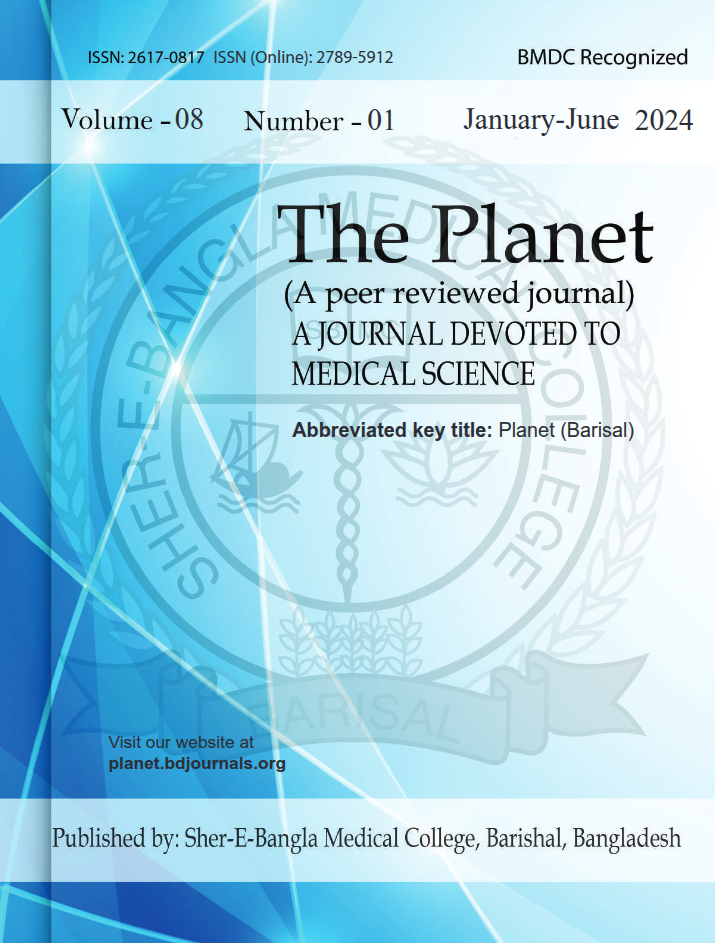Published 28-12-2024
Keywords
- Pediatric Ileostomy,
- Intestinal Stomas,
- Postoperative Complications,
- Skin Excoriation,
- Surgical Management
Copyright (c) 2024 The Planet

This work is licensed under a Creative Commons Attribution 4.0 International License.
How to Cite
Abstract
Introduction: Intestinal stomas are critical surgical interventions used to manage various gastrointestinal surgical conditions either congenital or acquired. This study aims to evaluate the management practices and complications associated with ileostomy care at Dhaka Shishu (Children) Hospital in Dhaka, Bangladesh. Methods & Materials: This prospective observational study was conducted at the Department of Pediatric Surgery, Dhaka Shishu (Children) Hospital, from March 2017 to September 2019. A total of 67 patients, aged from 1 day to 18 years requiring ileostomy care, were included. Data were collected on demographic details, clinical characteristics, types of ileostomies performed, skin excoriation, and other postoperative complications. The management included the use of linseed oil or zinc oxide paste as needed. Results: The majority of participants (79.10%) were within 1 month of age. The primary diagnoses included meconium ileus (49.25%), ileal atresia (28.36%), Hirschsprung disease (10.45%), and intussusception (11.94%). Double-barreled ileostomy was performed in 62.69% of cases, Bishop Koop ileostomy in 28.36%, and loop ileostomy in 8.96%. No skin excoriation was observed in 44.78% of participants, with first-degree excoriation in 50.75% and no cases of second-degree excoriation. Notably, there were no instances of wound infection or wound dehiscence among the participants. Conclusion: This study demonstrates effective management practices for pediatric ileostomy care at Dhaka Shishu (Children) Hospital, with a low incidence of complications. The results emphasize the importance of tailored surgical techniques and comprehensive postoperative care in improving patient outcomes.



